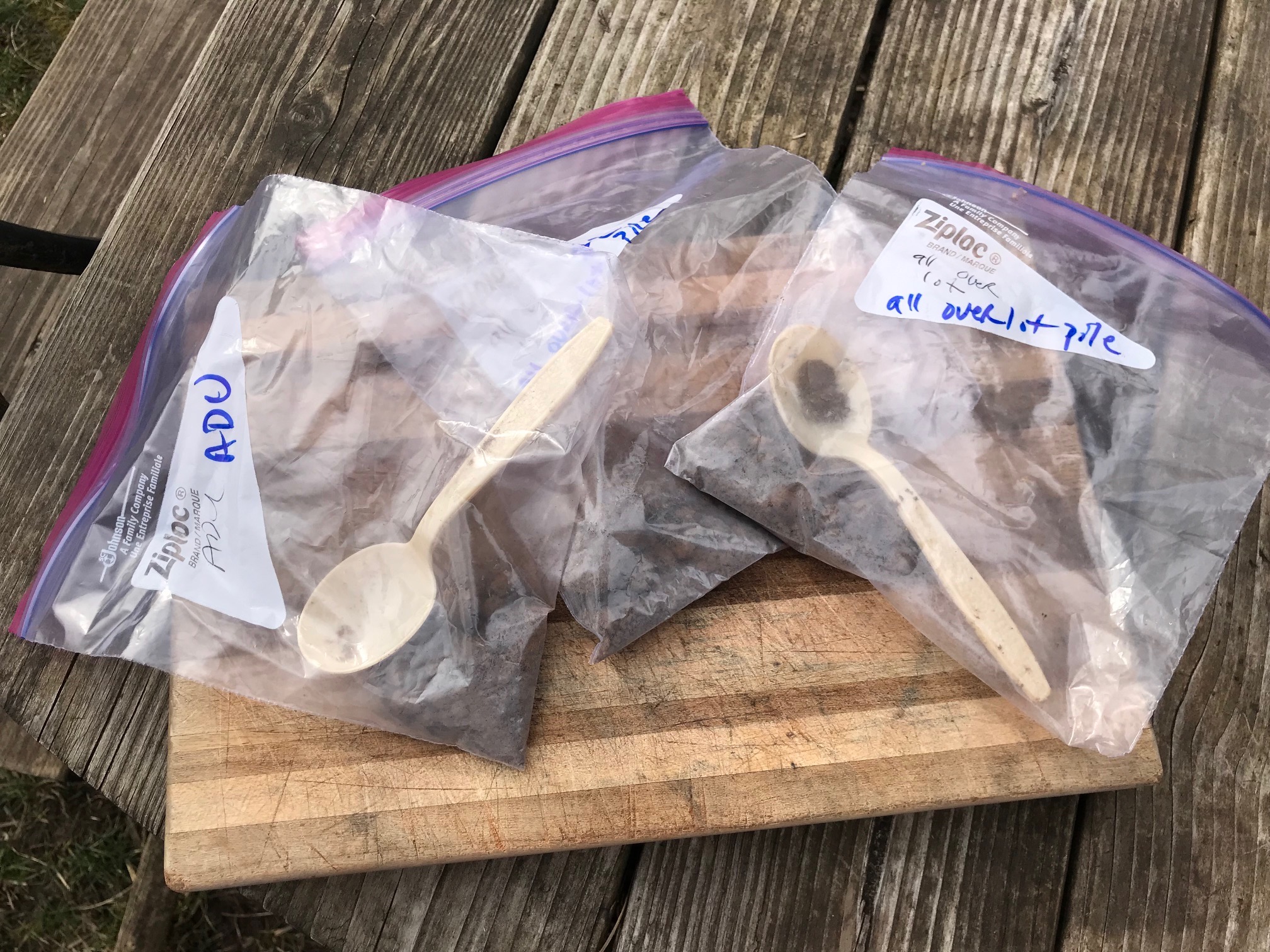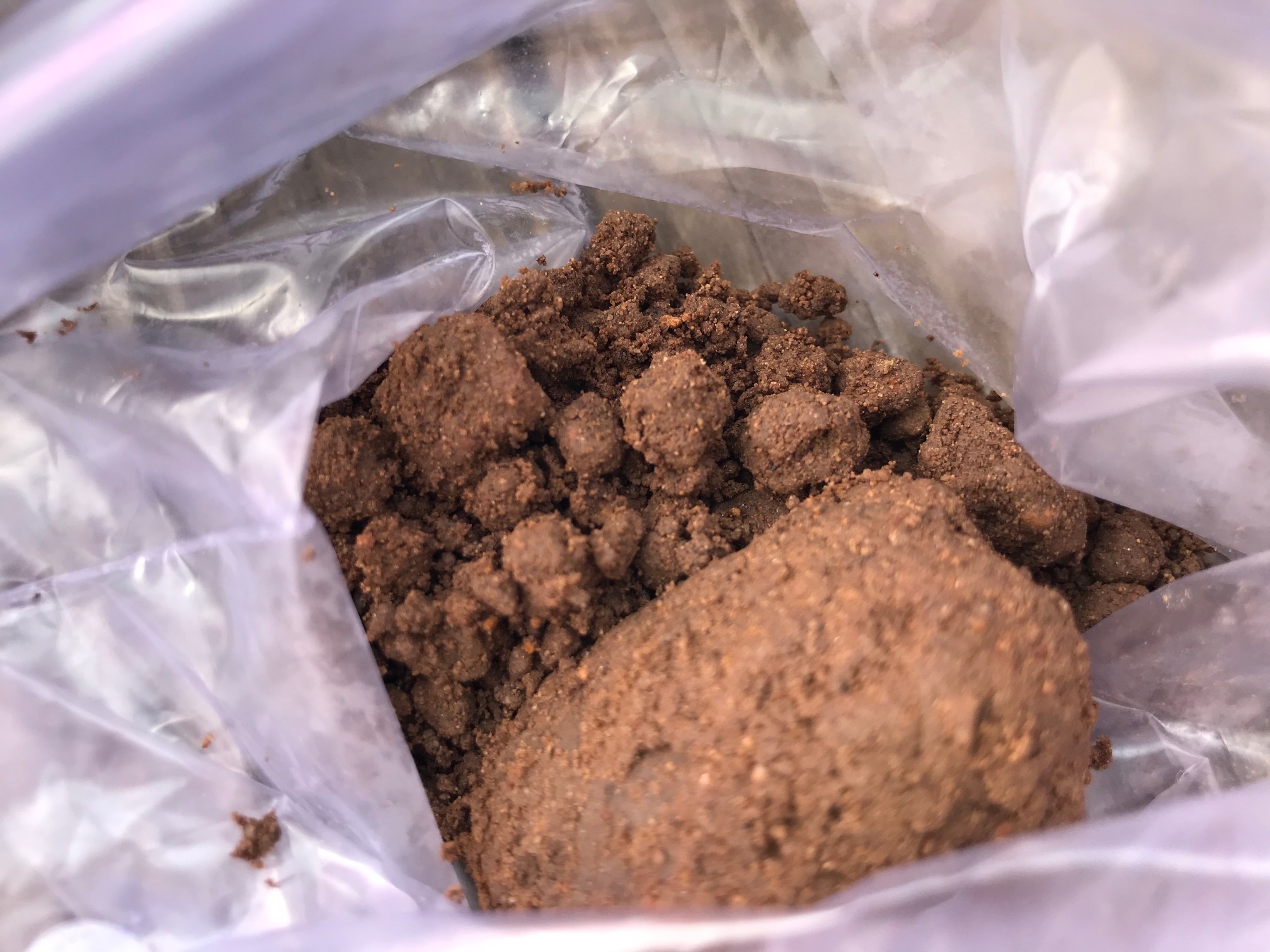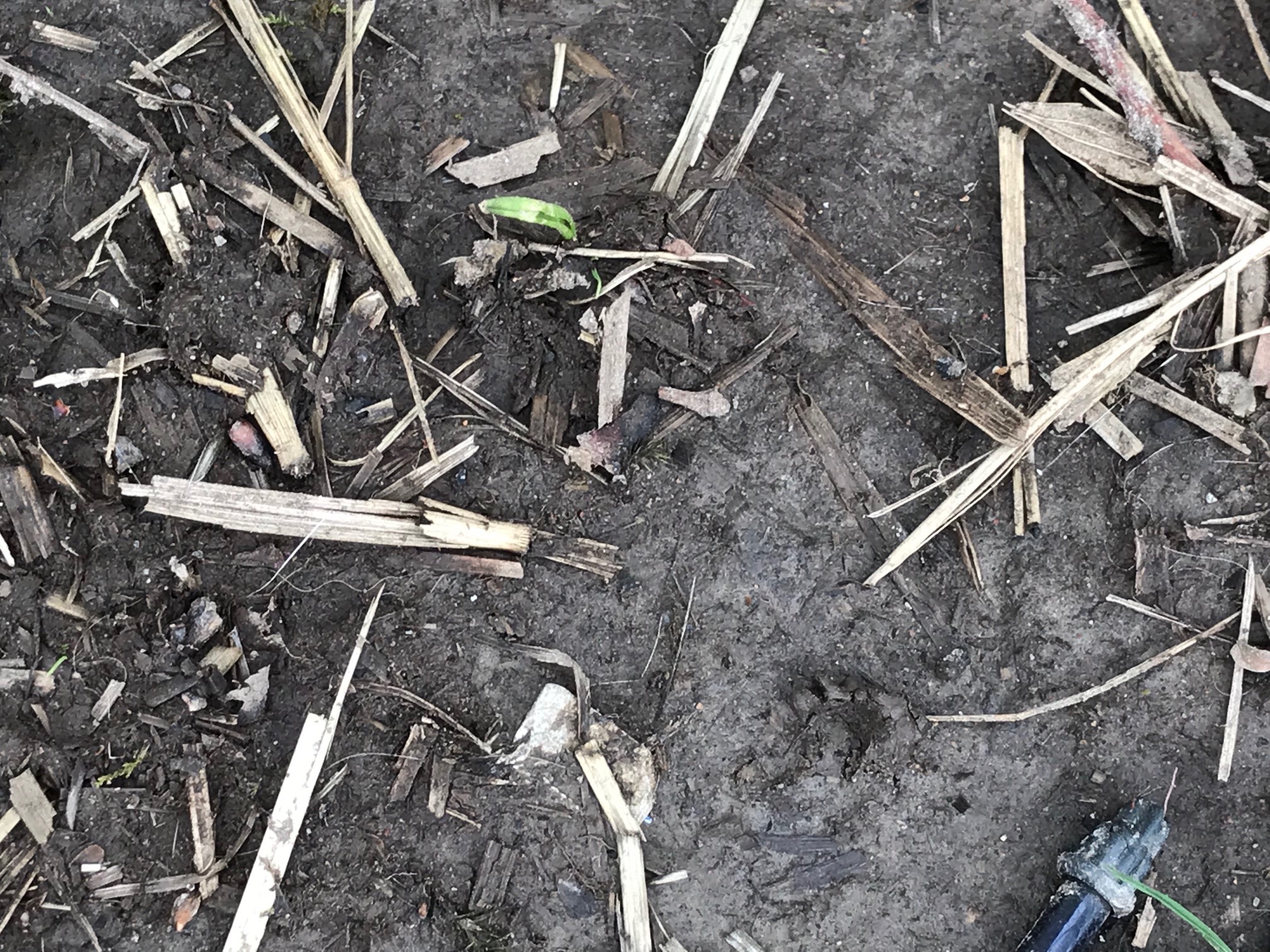Soil from Southern California (XRF Test Results – February 2019).
Someone sent me some soil to test, and I thought I would share the results here with all of you!
Although most of the items sent in by folks for me to test are household consumer goods, I often get soil samples to test for families with concerns about toxicants in their yard (or garden, or play area.) I don’t usually report those results here on my blog – but since I need to get these results to the family anyway – I thought I would post a set (or two) of results here as an example.
This particular set of soil samples (image above; results below) is from Southern California.
Protocols:
Samples are sent to me – per instructions – in clean, previously-unused ziplock baggies, and the soil is tested via XRF analysis right through the ziplock bag. I generally place the samples on a bare wood surface for testing – a surface that has been previously tested and confirmed to have no metals (I have a hand made cutting board – seen in the image above – or untreated wood table that I use for this.)
When I test soil samples I always test for at least 60 seconds; if I detect a toxicant (usually Lead or Cadmium) in the sample, I do a second or third test of the same sample (usually in another area of the sample) to confirm the toxicant levels. Each sample is always tested at least twice. If soil is negative for toxicants, and test results are generally in the same ballpark for each sample, I usually report only one set of results to the families who send me soil to test.
These particular samples were taken at the site of a demolished home, where a new home is being built. These soil samples were all reddish (like this photo below) and that is because they were each high in iron. Please continue reading below the image.
Sample One: Test One (ADU)
No toxicants found, but positive for the following metals*:
- Barium (Ba): 281 +/- 45 ppm
- Zinc (Zn): 33 +/- 16 ppm
- Iron (Fe): 17,600 +/- 600 ppm
- Bismuth (Bi): 20 +/- 9 ppm
- Vanadium (V): 173 +/- 30 ppm
- Titanium (Ti): 1,448 +/- 86 ppm
Sample Two: “All over lot pile”
No toxicants found, but positive for the following metals*:
- Barium (Ba): 287 +/- 46 ppm
- Zinc (Zn): 35 +/- 16 ppm
- Iron (Fe): 17,900 +/- 600 ppm
- Bismuth (Bi): 28 +/- 10 ppm
- Vanadium (V): 159 +/- 29 ppm
- Titanium (Ti): 1,295 +/- 82 ppm
Sample Three: “All over lot pile #2”
No toxicants found, but positive for the following metals*:
- Barium (Ba): 306 +/- 45 ppm
- Iron (Fe): 17,400 +/- 600 ppm
- Bismuth (Bi): 24 +/- 10 ppm
- Vanadium (V): 180 +/- 33 ppm
- Titanium (Ti): 1,563 +/- 94 ppm
*Note: It is normal for soil to test positive for various metals.
Contrary to citations in MANY studies and articles, soil will not naturally test positive for Lead. The widely-repeated notion of “naturally-occurring Lead” in surface soil is a erroneous / a misinterpretation of data (current and historic.)
I have tested hundreds of samples of soil from around the country. The XRF instrument I use accurately tests down to single-digit parts per million. It is a fact that in many urban areas today, many topsoil samples test positive for varying amounts of Lead. This ubiquity of Lead in topsoil is not “natural”, but rather is a relatively modern epiphenomenon — caused by post-industrial human activities – primarily, Large-scale, continuous Lead mining operations introducing dust from deep deposits into the atmosphere; several decades of Leaded gasoline exhaust; more than a century of Lead-based paint use; and other sources of industrial contamination. Contrary to mistaken beliefs or claims – as these samples clearly demonstrate – it is quite possible for topsoil to be entirely negative for Lead – and I assert that we should strive for that in our yards (where our children play, especially!)
Here’s a link with more information about sending me soil samples to test.
Here’s a link with how to interpret soil test results (if your soil is positive for Lead).
As always, thank you for reading and for sharing my posts!
Please let me know if you have any questions.
Tamara Rubin
#LeadSafeMama
This is the soil in my yard, for comparison. [Decidedly not at all red! And in case you’re wondering, in this closeup photo, those are pieces of natural straw – not some construction debris.]
Never Miss an Important Article Again!
Join our Email List





